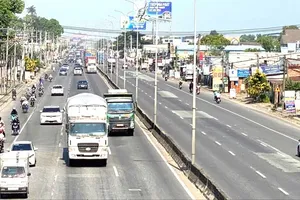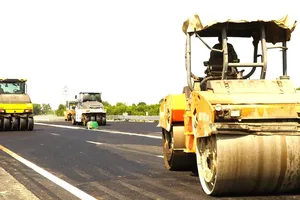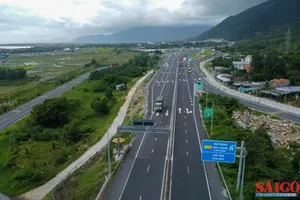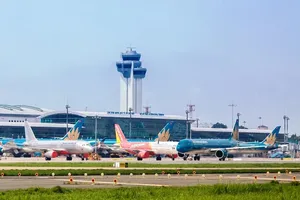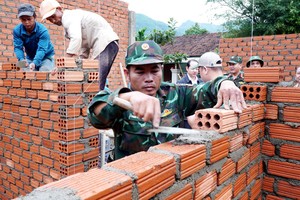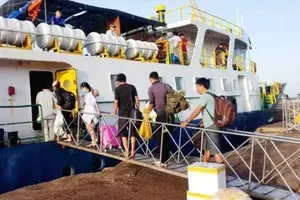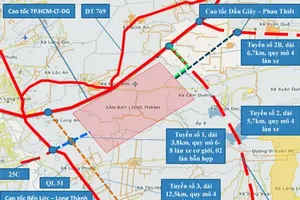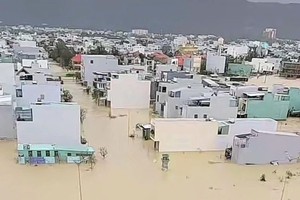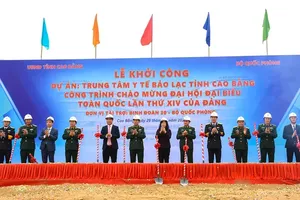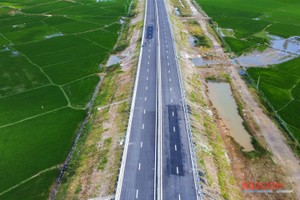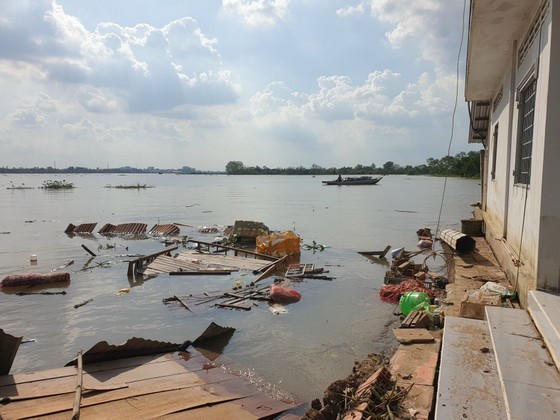 |
The site of the latest land erosion along Co Chien riverbank. (Photo: SGGP) |
Vo Minh Thao, one of the 16 most helpless victims of the land erosion incident on Co Chien riverbank, recalled that he was taking care of his orchard that afternoon when the dyke on Co Chien River broke, and water flooded into his fish pond. In a hurry he rushed into his house and grasped all important personal documents as well as his dead father’s photo, just in time to escape the erosion and to see his own house gradually disappear with the water.
This land erosion, happening in December 2022 in Hoa Ninh Commune of Long Ho District in Vinh Long Province left all 16 households empty hand. Thao’s neighbor, Mr. Bay Truong, had to transfer the newly built graves of his mother and elder brother to another land lot for fear of similar incidents that can sweep away those graves.
At present, the landslide site is 500m long, and 200-250m deep into the shore. The total damaged surface area comes to 10ha, affecting 22 households.
Every year, after the annual flood withdraws, land erosion happens along riverbanks in the southern provinces of Dong Thap, An Giang, Vinh Long, Ca Mau, Bac Lieu, Kien Giang.
Ca Mau Province, with the longest coastal line in the Mekong Delta of 254km, reports a land erosion rate of 20-25m and 45-50m per year in the Eastern and Western shore, respectively. It has already announced the natural disaster emergency, yet has not had sufficient resources to completely address this.
The Tien Giang Province Department of Agriculture and Rural Development informed that its districts of Cai Be, Cai Lay, and Chau Thanh have 93 landslide sites with the total length of nearly 4,200m, 52 of which are in urgent need of addressing to protect the property and life of residents. It requires VND69 billion (US$2.9 million) to handle the situation.
The Ministry of Agriculture and Rural Development estimates that in the 2021-2025 period, the Mekong Delta must allocate tens of trillions of VND to grow new protection forest and build structures for land erosion fighting along riverbanks and seashores. In particular, during the 2018-2021, the central budget sent over VND6.2 trillion ($262 million) for this task, but the Mekong Delta still needs another VND8.2 trillion ($347 million).
World Wide Fund for Nature – Vietnam (WWF Vietnam) also reported 665 landslide sites in the Mekong Delta, with a total length of 656km, 181 of which are serious cases. National Manager Ha Huy Anh of WWF Vietnam’s Sustainable Sand Management Project shared that the volume of sand moving to the Mekong Delta is gradually decreasing by 7 million cubic meters a year, while the exploitation quantity reaches 27-30 million cubic meters, along with a loss of 5 million cubic meters into the sea.
Scientists commented that the over-exploitation of sand has contributed to this serious state of land erosion. Recent surveys of WWF Vietnam reveal that there are deep holes of 50m due to sand mining along Tien River near My Thuan Bridge. These have cause more and more landslides, sweeping away houses, roads, and manufacturing land.
Vice Chairman Le Quoc Anh of Kien Giang Province People’s Committee said that the province has just introduced a project with short-term and long-term solutions to prevent coastal and riverside land erosion in parallel with protecting the ecological environment and developing mangrove forests and creating jobs for local residents.
Nguyen Huu Thien, an independent researcher on ecosystems in the Mekong Delta, voiced that the lack of sand truly threatens the safety of major bridges crossing Tien River and Hau River. Therefore, it is urgent to apply inter-regional management on sand mining.
Scientists suggest that it is wiser to research on new materials to replace sand, especially in construction works. Meanwhile, the exploitation of sand must take into consideration the volume of sand transported to the Mekong Delta each year, not just the current sand reserves in the riverbeds. Also, the State must impose a regulation on the proportion of sand alternatives in public facilities construction.

